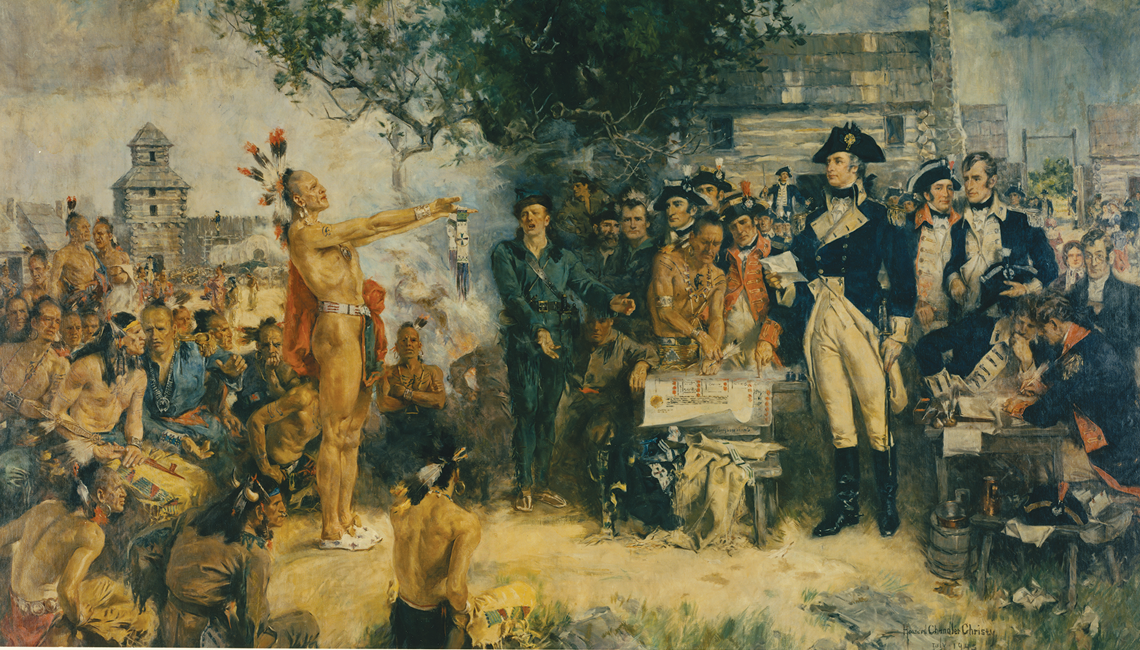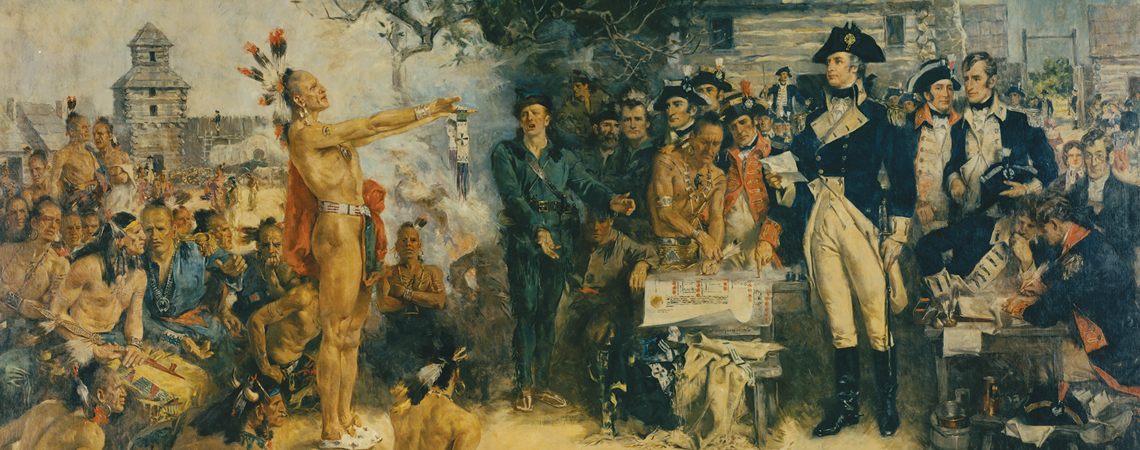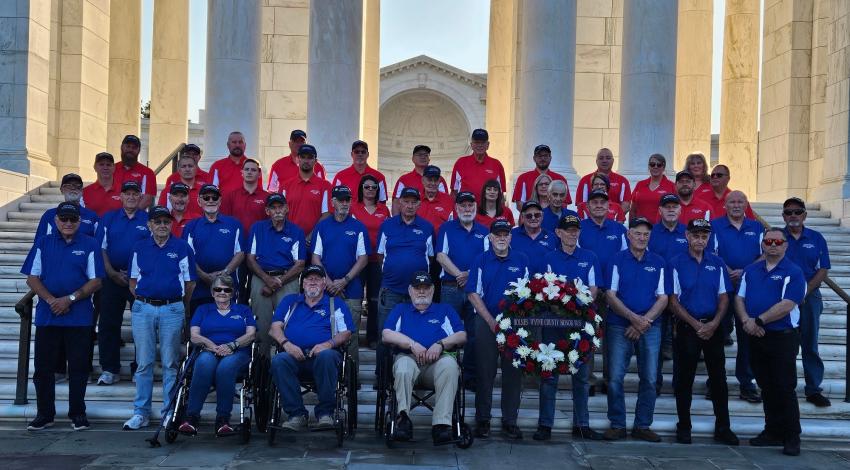Of the many paintings hanging in the Ohio Statehouse in Columbus, the largest by far measures 22 feet long by 16 feet high and is titled The Signing of the Treaty of Green Ville. Completed in 1945 by artist Howard Chandler Christy, the painting depicts the historic 1795 meeting at Fort Greenville (today’s Greenville, Ohio) between Little Turtle, chief of the Miami Tribe, and General “Mad” Anthony Wayne, representing the United States.
The Signing of the Treaty of Green Ville, courtesy of the Ohio History Connection.
Setting the scene
At the end of the Revolutionary War, England ceded to the fledgling USA ownership of the Northwest Territory — an immense area north and west of the Ohio River that would one day become five states: Ohio, Indiana, Illinois, Michigan, and Wisconsin, as well as part of Minnesota.
The major problem with the agreement was that it completely ignored tens of thousands of indigenous people who were already living on that land — from dozens of major tribes — who were not about to give up their claims on the land without a fight.
The resulting decade-long conflict was known as the Northwest Indian War, and the final fight of that conflict took place on Aug. 20, 1794, near the banks of the Maumee River. The tribesmen had ensconced themselves in a large area of downed, jumbled trees that had been blown over by a tornado. Realizing that an attack on the fallen timbers would be a suicide mission, Wayne needed a ruse to draw the opposition out into the open. He ordered 500 mounted riflemen to approach the area and engage briefly, then fall back in apparent chaos and confusion.
The enemy took the bait, pouring from the downed woods in pursuit of the retreating cavalry — only to be met head-on by the main body of the army.
In truth, both sides suffered roughly an equal number of casualties — about 100 total — but the tribes saw it as a crushing defeat, and their chiefs began entreating Wayne for peace almost immediately. He accepted their requests, encouraging them to attend a peace council scheduled for the following summer. The result of that weeks-long gathering, attended by more than 3,000 — including 91 chiefs of various tribes — was the historic Treaty of Greenville, as depicted on Christy’s painting, which opened the Ohio country to white settlements.
Historic site
The actual location of the battlefield, near the intersection of U.S. 24 and U.S. 23/I-475, was not discovered until 1995, by G. Michael Pratt, an anthropologist and faculty member at Heidelberg College. Today, Fallen Timbers Battlefield consists of three sites: Fallen Timbers Battlefield, Fallen Timbers Monument, and Fort Miamis. It’s owned, operated, and managed by Metroparks Toledo, and has been designated a National Historic Site and an Affiliated Unit of the National Park Service.
W.H. "Chip" Gross is Ohio Cooperative Living's outdoors editor.
For more, click here.










